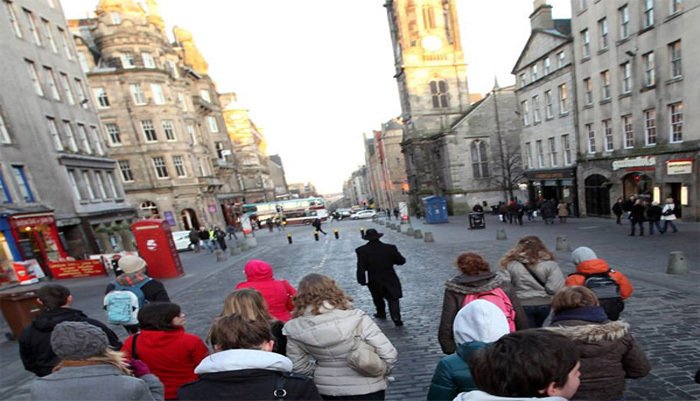It typically takes around 15-20 minutes to hike 1 mile, depending on the terrain and pace. Hiking is an excellent way to reconnect with nature and enjoy physical activity.
The time it takes to hike a mile can vary based on factors such as incline, trail conditions, and individual fitness levels. Whether you are a seasoned hiker seeking a challenging ascent or a beginner looking for a leisurely stroll, hiking offers a unique opportunity to experience the great outdoors.
From lush forests to majestic mountains, each trail presents its own set of adventures and rewards. So, lace up your boots, pack your essentials, and embark on a memorable journey through nature’s wonders.

Credit: www.ebay.com
Factors Affecting Hiking Speed
Fitness Level
Your fitness level plays a key role in how quickly you can hike a mile.
Terrain Type
The type of terrain you are hiking on can significantly impact your pace.
Weather Conditions
Weather conditions such as rain or extreme heat can slow down your hiking speed.
Average Hiking Times
When planning a hiking trip, it’s essential to factor in the time it takes to cover certain distances. Knowing the average hiking times based on different paces can help you better estimate your trekking duration.
Leisurely Pace
- Walking at a leisurely pace, it typically takes around 20-30 minutes to hike 1 mile.
Moderate Pace
- Hiking at a moderate pace will have you covering 1 mile in approximately 15-20 minutes.
Brisk Pace
- At a brisk pace, hikers can complete 1 mile in just 10-15 minutes.
Tips To Improve Hiking Speed
When it comes to hiking, improving your speed can make a significant difference in the efficiency and enjoyment of your journey. Whether you’re a seasoned hiker looking to set a new personal record or a beginner aiming to build up your stamina, there are various tips and techniques that can help you hike faster and more efficiently. Here are some key areas to focus on to improve your hiking speed:
Training And Conditioning
Training and conditioning are essential for increasing your hiking speed. To build stamina and endurance, incorporate regular cardio exercises such as brisk walking, jogging, or cycling into your fitness routine. Strength training exercises that target your leg muscles, such as squats and lunges, can also help improve your hiking speed and agility.
Choosing The Right Gear
Having the right gear can impact your hiking speed. Invest in lightweight, moisture-wicking clothing and comfortable, supportive footwear to reduce fatigue and enhance mobility. A well-fitted backpack with padded shoulder straps and a hip belt can distribute weight evenly and minimize strain, allowing you to maintain a brisk pace with ease.

Credit: www.goscotlandtours.com
Safety Considerations
When it comes to hiking, safety should always be a top priority. Whether you’re embarking on a short one-mile hike or a longer trek, it’s important to be prepared and take the necessary precautions to ensure a safe and enjoyable experience. In this section, we will discuss two key safety considerations: hydration and nutrition, as well as navigation and trail awareness. By keeping these factors in mind, you can make the most of your hiking adventure and stay safe along the way.
Hydration And Nutrition
Staying hydrated and properly nourished is crucial when hiking, even for shorter distances. As you exert yourself, your body will use up energy and water, so it’s important to replenish and fuel up. Here are some tips to keep in mind:
- Carry enough water for the duration of your hike, typically around 16-32 ounces per hour of activity.
- Avoid sugary drinks and opt for water or electrolyte-rich beverages instead to stay properly hydrated.
- Pack lightweight, easy-to-carry snacks like energy bars, trail mix, or fruit to keep your energy levels up.
- Consider the duration and intensity of your hike when planning your meals and snacks.
- Listen to your body’s cues and take breaks to rest and refuel when needed.
Navigation And Trail Awareness
When venturing out on a hike, it’s important to have a good sense of navigation and trail awareness. Losing your way can lead to unnecessary risks and make your hiking experience stressful. Follow these guidelines to stay on track:
- Before starting your hike, familiarize yourself with the trail map and study the route.
- Use a GPS device or hiking app to assist you in navigating unfamiliar trails.
- Pay attention to trail markers, signs, and other indicators to ensure you’re on the right path.
- Stay on designated trails and avoid straying off into unmarked or unauthorized areas.
- Be aware of any potential hazards such as steep slopes, loose rocks, or wildlife along the trail.
By following these safety considerations, you can have a memorable and enjoyable hiking experience while minimizing the risks. Remember to always be prepared, stay hydrated, and be mindful of your surroundings to make the most of your one-mile hike or any future adventures.
Conclusion And Next Steps
Discovering the time it takes to hike one mile can vary depending on factors such as terrain and fitness level. By determining this, you can then plan your next steps and set realistic goals for your hiking adventures. Take into account the conditions and your own pace to make the most of your outdoor experiences.
After understanding how long it takes to hike 1 mile, you can now set realistic goals to accomplish your hiking adventures. Remember, hiking is not just about reaching the destination but also about enjoying the journey. So, let’s explore some next steps to ensure you have an unforgettable hiking experience.
Setting Realistic Goals
When setting goals for your hikes, it’s essential to be realistic and consider your fitness levels and the difficulty of the terrain. Start by evaluating your current fitness level and gradually increase the distance you hike over time. Setting achievable goals will keep you motivated and prevent overexertion.
Here’s how you can set realistic goals:
- Assess your current fitness level
- Start with shorter distances and gradually increase
- Choose trails suitable for your skill level
- Consider the elevation gain and trail conditions
- Account for rest breaks and enjoying the scenery
Enjoying The Journey
Don’t forget that hiking is not just about reaching the destination; it’s about immersing yourself in the beauty of nature and enjoying every step along the way. Here are some ways to enhance your hiking experience:
- Stay present: Engage your senses and observe the sights, sounds, and smells of the surrounding environment.
- Take breaks: Pause at scenic spots or when you need to rest, and appreciate the panoramic views.
- Stay hydrated and nourished: Bring enough water and snacks to keep your energy levels up.
- Interact with nature: Learn about the flora and fauna you encounter, and take time to appreciate the intricate details of your surroundings.
Remember, hiking is an adventure that allows you to connect with nature and challenge yourself physically and mentally. By setting realistic goals and embracing the journey, you can make the most of your hiking experiences.

Credit: www.discountmags.com
Frequently Asked Questions On How Long Does It Take To Hike 1 Mile
How Long Does It Take To Hike 1 Mile In General?
On average, it takes about 20 to 30 minutes to hike 1 mile at a moderate pace. However, the time can vary depending on various factors such as the terrain, the hiker’s fitness level, and the presence of any obstacles or steep inclines.
Can Hiking Speed Affect The Time It Takes To Hike 1 Mile?
Yes, the hiking speed can significantly impact the time it takes to cover 1 mile. A brisk walker may complete the hike in 15-20 minutes, while a slower pace could take 30-40 minutes. Hiking speed depends on fitness, weather conditions, and personal preference.
Are There Any Factors That Can Increase Hiking Time For A Mile?
Certainly! Several factors can affect the time it takes to hike 1 mile. These may include rugged terrains, steep inclines, slippery paths, or the presence of obstacles like fallen trees or river crossings. Being cautious and taking breaks along the way may also increase hiking time.
Conclusion
The time it takes to hike one mile depends on various factors such as terrain, fitness level, and weather conditions. It can range from 15 to 45 minutes for an average hiker. Keep in mind that it’s not about speed but about enjoying the journey and staying safe.
Happy hiking!
